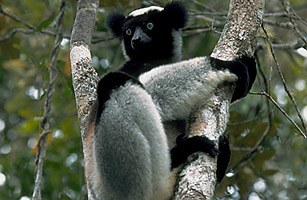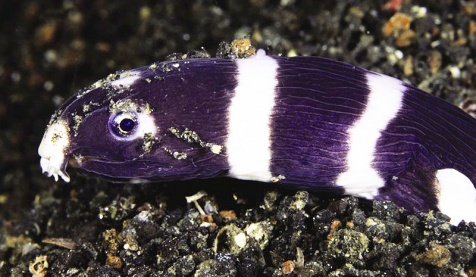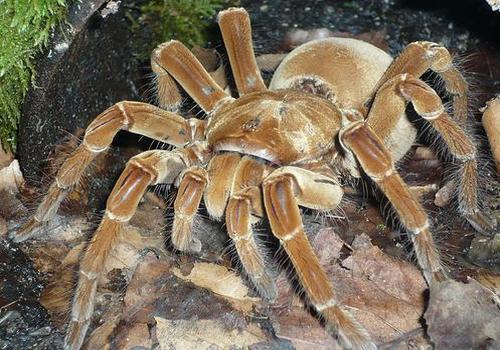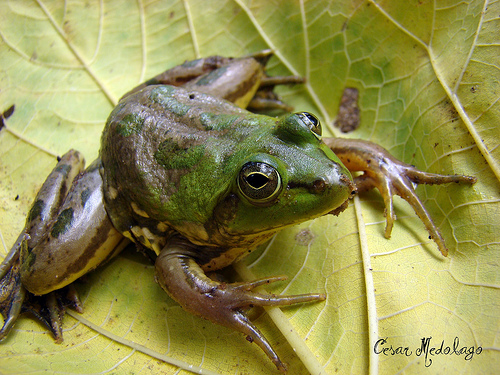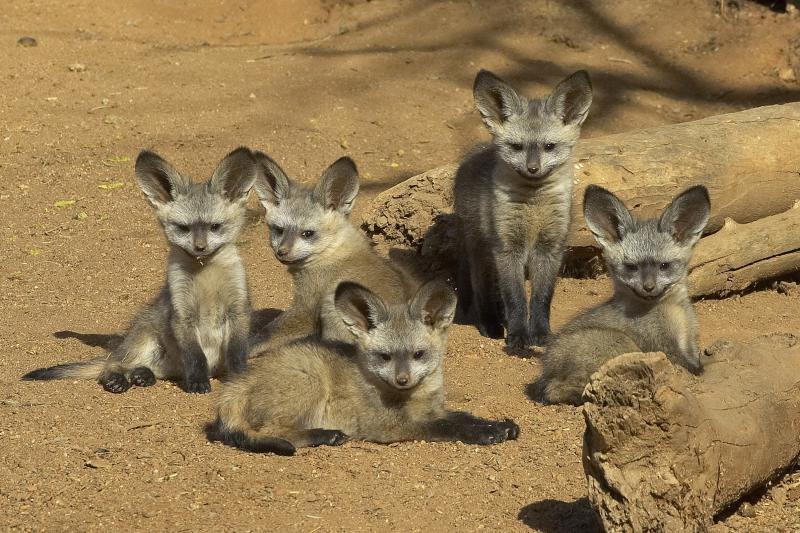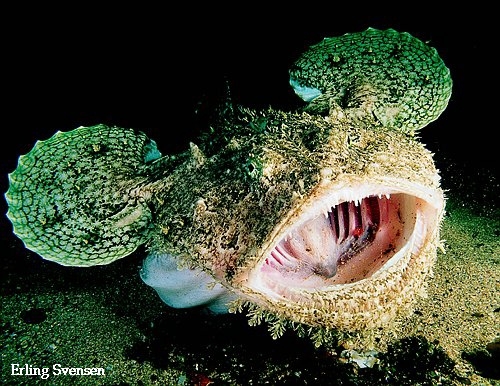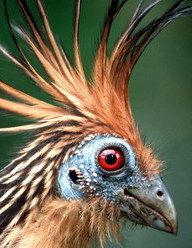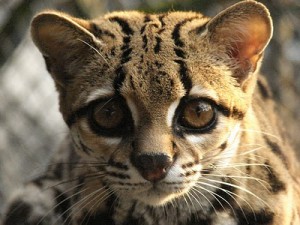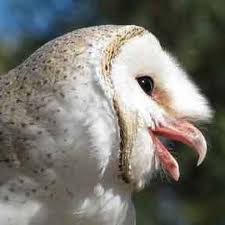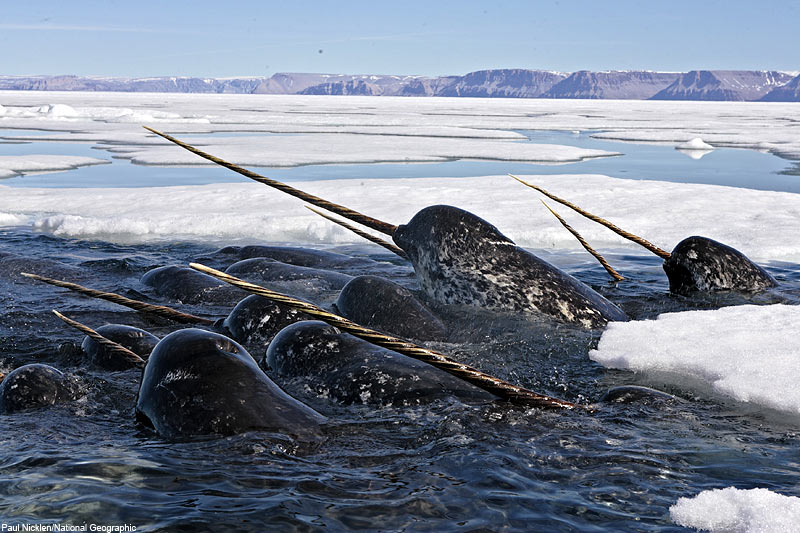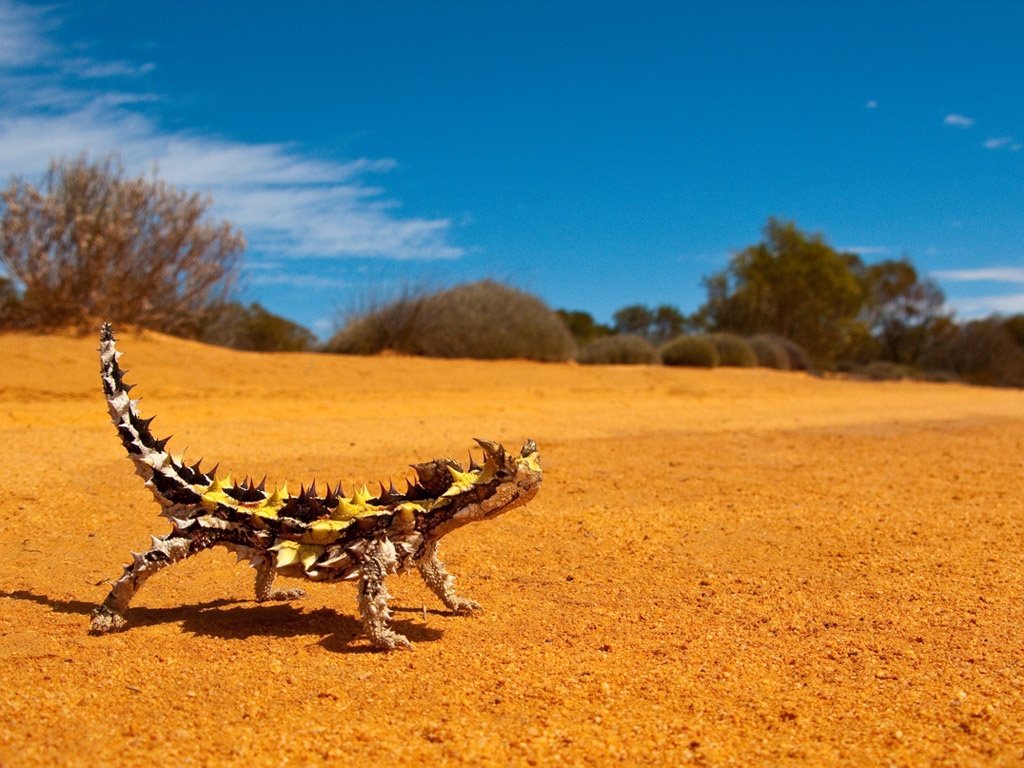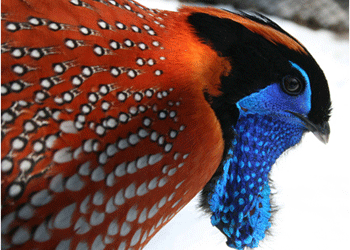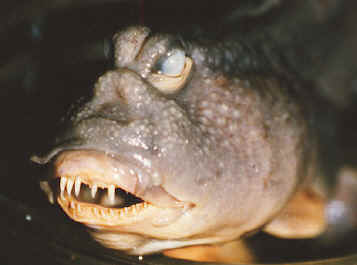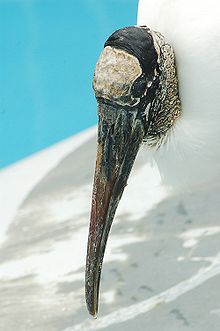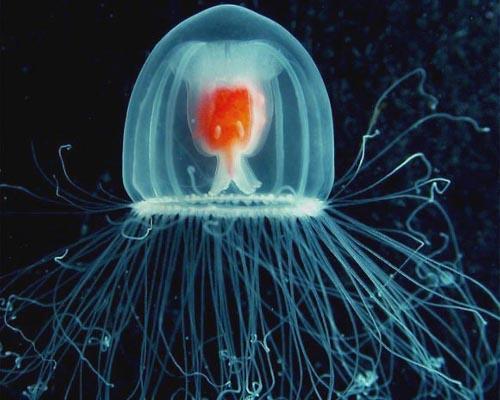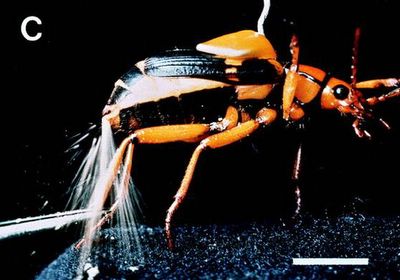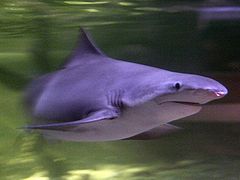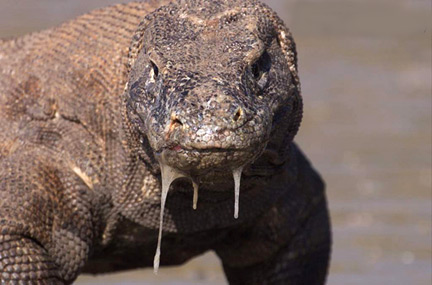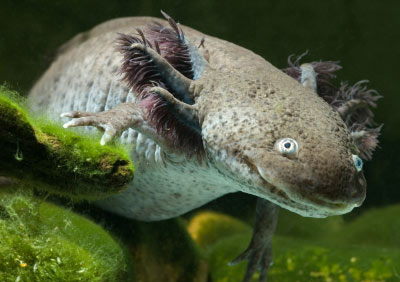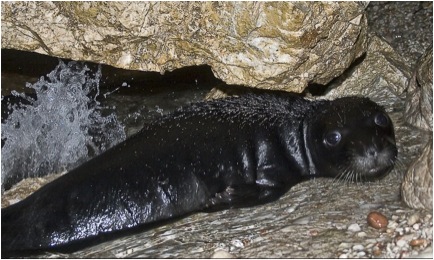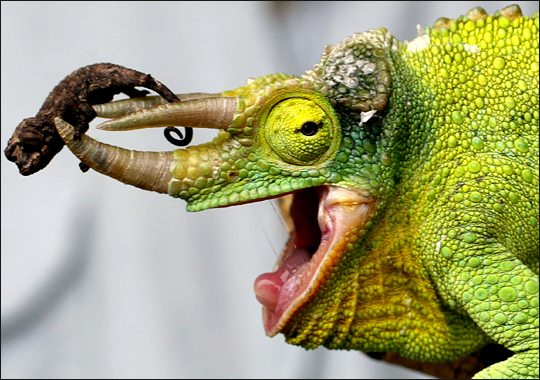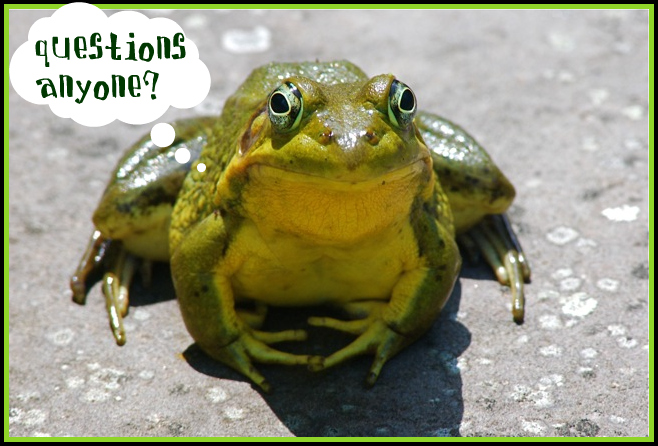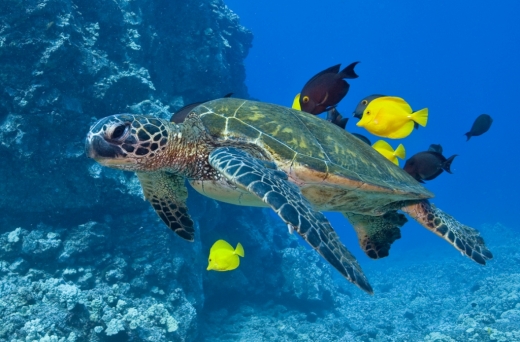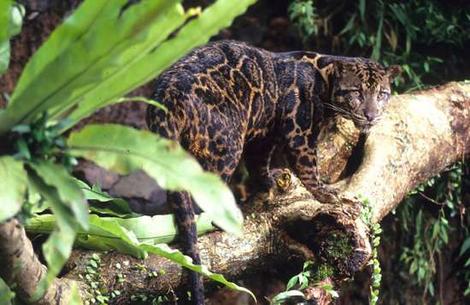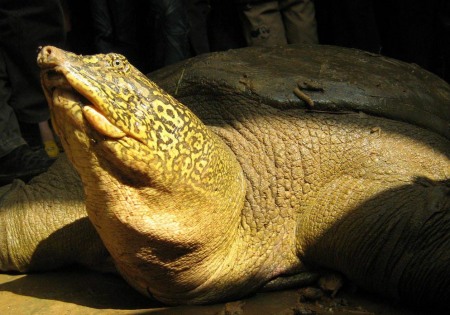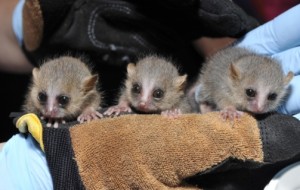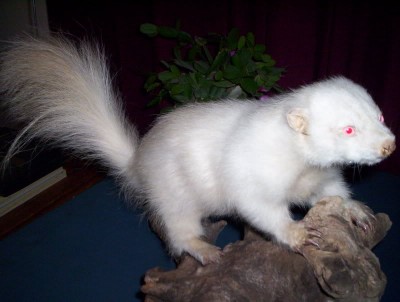Trivia question for Jan-23-2011
For today’s trivia, Olivia did some research on a cute looking primate and came up with this:
This type of Lemur is unique in a particular way. As with all Lemurs, they live in protected reserves in Madagascar. They live in family units and “Sing” loudly to reinforce pair-bonds and to defend their territory. This type of Lemur is not nocturnal. So here’s our questions:
Tell us what type of Lemur this is and also, tell us how far their calls can be heard by the human ear.
Good Luck 😉
Answer:
Congratulations to
Trivia question for Jan-22-2011
Well the kids decided to take their grandfather to the Aquarium today and use the tickets Olivia got for her birthday last Aug. They had a blast and learned a lot of great things which inspired todays trivia. So here goes:
This boldly striped fish bears some resemblance to the venomous Banded Sea Snake, but is mild-mannered and harmless. It is a very finicky eater and difficult to keep in captivity. Unlike many of it’s kind, it often comes out of hiding to forage for food during daylight hours.
Can you tell us what this is?
Thanks for playing along 😉
Answer:
Congratulations to Natalie who was the first to get the answer correct. The fish we featured is the Harlequin Snake Eel. These guys are also known as Banded Snake Eel, Broad-nose Worm Eel, and Ringed Snake Eel.
The Harlequin Snake Eel can be recognized by its long slender body and coloration. It is white with 25 to 32 black bands that encircle the body. As a fish ages, black spots may develop between the rings.
Here is a little more information on these eels: Harlequin Snake Eel
Thanks for playing along 😉
Trivia question for Jan-21-2011
After Olivia’s trivia yesterday which seemed to stump everyone, Carter took quite some time looking through his books to see if he could come up with something equally as challenging and informative. Let’s see how he did:
This cool looking spider belongs to the tarantula group. They are commonly found in marshy or swampy areas, usually living in burrows that they have dug or which have been abandoned by other burrowing creatures.
Females lifespans can reach 15-25 years but they always eat their mates so males usually only live 3-6 years.
Can you tell us the proper name for this huge spider and also tell what affect their venom has on humans?
Good Luck 😉
Answer:
Wow, two days in a row. These guys are on a roll. Lots of great guesses but the spider we featured is known as The Goliath Bird-Eater Spider or Bird-Eating Tarantula. As for it’s venom, the Goliath Birdeater is fairly harmless to humans, as are most species of tarantulas.
Like all tarantulas, they have fangs large enough to break the skin of a human (.75 to 1.5 inches). They carry venom in their fangs and have been known to bite when threatened, but the venom is relatively harmless and its effects are comparable to those of a wasp’s sting.
Here is more on these huge spiders: Goliath Bird-Eater Spider
Thanks for playing along 😉
Trivia question for Jan-20-2011
Olivia found a very interesting guy for her trivia tonight. We had no idea there were amphibians around which made such a peculiar noise.
Amazingly, the synthesised version of the skin from this frog is able to stimulate the secretion of insulin in pancreatic cells under laboratory conditions without toxicity to the cells. This synthetic medicine is now used in the treatment of Type 2 diabetes. But that’s not the amazing feature of this aptly name frog.
For today’s trivia, we want you to tell us the name of these guys and what is so unique about them.
Good Luck 😉
Answer:
Wow, great guesses everyone but no one got it correct. This is the Paradoxical Frog or shrinking frog, is so named because it grows into a very large – 10 inch long—tadpole, which in turn becomes an ordinary-sized frog, only about a quarter of its former length. That’s right, the adults are actually smaller than their kids… image what that would be like for us.
These are not the only species on the planet that this happens too but there aren’t many. These guys come out at night and are hard to find which is why there is not too much information available about their lifespan etc. One cool thing these guys do is when you get too near to them or they feel threatened, they make a strange noise which sounds just like someone coughing. Image being in the dark, all alone and all of a sudden you here coughing noises right next to you…. Creepy.
Here’s a little more information on these guys: Paradoxical Frog
Anyway, thanks for playing along 😉
Trivia question for Jan-19-2011
Here is a group of cute little guys that Carter fell in love with. Their name is derived from the Greek words “oto” and “cyon”. These guys love insects so they visit termite hills, follow locust swarms and stays close to herds of zebras or antelopes in order to feed on the insects landing on their excrement.
Can you tell us what kind of canine this is and also tell us where they can be found?
Good Luck 😉
Answer:
Congratulations to Natalie for being the first with the correct answer. We were featuring the Bat-eared Fox which in greek is called “Otocyon” which is derived from the Greek words “oto” for ear and “cyon” for dog. They live in the African savanna. Due to its unusual teeth, the Bat-eared Fox was once considered as a distinct subfamily of canids (Otocyoninae). However, according to more recent examinations, it is more closely related to the true foxes.
Thanks for playing along 😉
Trivia question for Jan-18-2011
Having a soft-heart for the odd and peculiar, Olivia decided to pick this odd looking character for tonight’s trivia, so here goes:
This fish is able to distend both its jaw and its stomach to enormous size, allowing it to swallow prey up to twice as large as its entire body. One family of this species is of commercial interest. In Europe and North America, the tail meat of this fish (also known as goosefish or monkfish), is widely used in cooking, and is often compared to lobster tail in taste and texture. So here’s the question; Can you tell us what this is and how big they get?
Good Luck 😉
Answer:
The fish we featured is known as an Anglerfish. They are bony fish named for their characteristic mode of predation, wherein a fleshy growth from the fish’s head acts as a lure; this is considered similar to angling. As for their size, their length ranges from 8-inches up to 3.3 ft and their weight ranges up to 110-lbs.
Here is more on these wierd looking fish: Anglerfish
Thanks for playing along
Trivia question for Jan-17-2011
Today’s is Carter’s turn and he decided to pick something from the Invertebrates category. To make it a little easier, we have included pictures from this insects caterpillar form, as well as it’s adult form, so here goes:
Can you identify this insect and tell us how it is able to live among bees, eating their honey without being driven away? Here’s a hint – It’s name comes from the peculiar makings on it’s thorax.
Good Luck 😉
Answer:
Okay everyone, this was obviously a little harder than we thought it would be. The insect featured is a Death’s-head Hawkmoth (one of the largest insects in Europe) and it can live among the bees because it has learned how to emulate the sound of the queen bee.
This moth gets it’s name from the peculiar markings on it’s thorax which resemble a skull-head or as the natives thought, an image of Death.
Here is more information: Death’s-head Hawkmoth
Thanks for playing along 😉
Trivia question for Jan-16-2011
Here is a bit of trivia from Olivia. She liked this bird when she first saw it because she said it looked like this bird was having a bad hair day 😉 The chicks are unusual in that two of their wing digits possess claws (careful picking these guys up).
So here’s our question. Can you name these peculiar looking birds and tell us which country boasts these birds as their National Bird?
Good Luck 😉
Answer:
Congratulations Ty and Kathy, you got both the species name and the country that boast this bird as their National Bird correct. This is a Hoatzin, also known as the Hoactzin, Stinkbird, or Canje “Pheasant”. The name Stinkbird is related to a strong smell produced by this bird, perhaps due to the consumption of leaves.
This is a noisy species, with a variety of hoarse calls, including groans, croaks, hissing and grunts. These calls are often associated with body movements such as wing spreading. While its preferred habitats, mangrove and riverine forest, are disappearing fast in some regions, it is less threatened than terra firme forest, which is the primary target for deforestation in the Amazon. The Hoatzin therefore remains fairly common in a large part of its range.
Here is more on these fine looking birds: Hoatzin
Thanks for playing along 😉
Trivia question for Jan-15-2011
Carter is obviously a cat lover as he picked out todays special guest, so here goes: These cats are found almost exclusively in areas of dense forest, ranging from tropical evergreen forest to tropical dry forest and high cloud forest. They are primarily nocturnal and typically live solitary lives except to mate.
Can you tell us what this animal is and also tell us one of their special tactics they use for hunting it’s prey?
Good Luck 😉
Answer:
Great job guessing everyone. When I first saw this picture I too thought it looked like a baby Ocelot like Cheryl’s son did but this is actually a Margay. Margay’s are spotted cats native to Middle and South America. Named for Prince Maximilian of Wied-Neuwied (a German explorer from the early 1800’s), it is a solitary and nocturnal animal that prefers remote sections of the rainforest.
The margay is very similar to the larger ocelot in appearance, although the head is a bit shorter, the eyes larger, and the tail and legs are longer. Margay’s are unique in their hunting abilities because they are one of the few species that actually hunt by mimicking the vocalisation of a prey species. Pretty cool huh?
Here is more on these little felines: Margay
Thanks for playing along 😉
Trivia question for Jan-14-2011
Olivia picked out this friendly looking guy to be today’s trivia, so here goes. They are the world’s largest species of monkey and they were once classified as Baboons. Can you tell us what kind of monkey this is and tell us what their 3 main natural predators?
Good Luck 😉
Answer:
Great job everyone. Ty and Natalie you guys got it right first. Jenny, as usual you are absolutely correct. The picture shows a male Mandrill (who could use a toothbrush according to Olivia). And Ty, you are spot on with listing the three main predators. Large birds of prey are also known to occasionally pick off a young mandrill but not when they are fully grown.
A large group of mandrills can cause significant damage to crops in a very short time, and where common they are widely perceived as pests. Here is more info on these guys: Mandrill
Thanks for playing along 😉
Trivia question for Jan-13-2011
Today’s question is about one of Carter’s favorite birds. This bird can hiss like a snake to scare away intruders, and when captured or cornered, it throws itself on its back and flails with sharp-taloned feet, making for an effective defense. Although this bird has over 20 different names can you tell us it’s most common name? Also, can you tell us what the number one cause of death is for these guys?
Good Luck 😉
Answer:
Good job everybody. This is a Barn Owl. It is also known by many other names, which may refer to the appearance, call, habitat or the eerie, silent flight: White Owl, Silver Owl, Demon Owl, Ghost Owl, Death Owl, Night Owl, Rat Owl, Church Owl, Cave Owl, Stone Owl, Monkey-faced Owl, Hissing Owl, Hobgoblin or Hobby Owl, Dobby Owl, Golden Owl, Scritch Owl, Screech Owl, Straw Owl, Barnyard Owl and Delicate Owl.
Although these owls are not yet considered endangered, the number one cause of their decline comes from the poisoning of rodents in areas where humans are trying to get rid of excessive rat populations. Studies have shown that an individual Barn Owl may eat one or more rodents per night; a nesting pair and their young can eat more than 1,000 rodents per year.
Thanks for playing along 😉
Trivia question for Jan-12-2011
Today’s question is compliments of Olivia, so here goes:
Can you name this odd looking sea creature and answer the question below?
The odd looking appendage on this animals is a:
A.) Tooth
B.) Horn
C.) Sword
And for a bonus, tell us what the appendage is primarily used for.
That’s it for today.
Good Luck 😉
Answer:
Congratulations to Dianne and Gina for both getting the correct answers in to us first. This is a Narwhal and the strange looking appendage is actually a Tooth (also know as a Tusk). The males are the ones who usually sport these long teeth and typically they only have one (although 1 in 500 have two of these tusks). The tooth usually grows out on the left side of their mouth and it is expected that the tusks are used as a secondary sexual characteristic, similar to the mane of a lion or the tail feathers of a peacock.
Here is more information about these guys: Narwhal
Thanks for playing along 😉
Trivia question for Jan-11-2011
Todays good-looking creature comes to you compliments of Carter. Can you tell us what this is and also what it’s strategy is when being attached? Lastly, let us know if they are endangered or if they are plentiful.
Good Luck 😉
Answer:
Congratulations again to Ty for getting the type of lizard correct. We were featuring the Thorny Devil and it’s main defense tactic is to display it’s false head. That’s right, it actually has a large lump on its neck area which looks similar to the size and shape of it’s head. When being attached, it lowers it’s head between it’s front legs and only the false head is visible. Pretty cool huh?
Here is more information;
Thanks for playing along 😉
Trivia question for Jan-10-2011
Today Olivia picked out the trivia question and she did it because she loved the colors of this cool looking bird, so here goes:
Can you identify this colorful bird and tell us where they can be found? To help you out, Olivia found a few facts she wants you to know:
These birds are a type of Pheasant and it takes their eggs longer to hatch than any other of its species. Chicks are able to fly within 2-3 days after hatching. Can you figure it out?
Good Luck 😉
Answer:
Congratulations to Ty for once again being the first to get the answer correct. This bird is in fact a Temminck’s Tragopan and they can be found in forest of Northern South Asia, in parts of India, Vietnam, Tibet, and China. They are not considered endangered and are often kept as pets. Here is more on these great looking birds:
Thanks for playing along 😉
Trivia question for Jan-09-2011
Sorry todays trivia is so late. We are preparing for a very busy week of meetings and conference calls. He is tonight’s trivia compliments of Carter:
Can you identify this handsome looking creature and tell us what their gills have in common with a scuba divers tank? Carter also wanted to know if you can name 3 things these guys like to eat.
Good Luck 😉
Answer:
Wow, the picture we picked out really made it difficult to identify what this species is. Carter did good. The creature we featured is a Mudskipper. Mudskippers are a type of gilled fish which is also like amphibians. They can live in or out of water as long as they are in a moist area. When they come out of the water, they actually trap a bubble oxygen by closing their large gills tightly. They can breathe through their skin (like a frog can). Their tightly shut gills act as a scuba divers tank which supplies the creature with the correct type of oxygen it needs while out of water.
Carter also asked you name at least 3 things these Mudskippers like to eat. They are known to eat small crabs, insects, worms, and small fish. Here is more information on these handsome guys:
Thanks for playing along 😉
Trivia question for Jan-08-2011
For today’s trivia, the kids stayed away from jokes and stuck with interesting animal facts. So here is today’s trivia:
Can you identify this large bird and tell us if they are considered endangered or not? We would also like to know what triggers their reproductive cycle.
Good Luck 😉
Answer:
Ty, you are correct. The bird we featured is a Wood Stork and they are no longer on the Endangered List thanks to conservation efforts which have helped protect their breeding grounds. These birds can control their reproductive cycle based on the water levels. As the waterholes start to dry-up, fish are more easily available as they get trapped in shallow pools which ensure sufficient food for the young.
Here is more information on the species: Wood Stork
Thanks for playing along 😉
Trivia question for Jan-07-2011
Carter and Olivia came up with this next question by reading something at the Outback Steakhouse their grandfather took them to earlier tonight. So here goes:
Can you tell us which one of these three endangered species can jump higher than the Sydney Harbor Bridge?
Good Luck 😉
Answer:
Congratulations to Gina for being the first with the correct answer. The answer is in fact “All of the Above”. Each of the species listed can jump higher than the Sydney Harbor Bridge… because the bridge can’t jump. Ha ha ha 😉 I know it was corny but when the kids read the joke on the menu at the restaurant, they could not resist. I allowed them to post the question with the understanding that they had to find a way to make it educational, so here is the educational part:
The Tasmanian Tiger (which was one of the animals you could choose from) is in fact a real species. The species has been listed as extinct since the 20th. century and only a few black and white photos even exist of the creature but apparent sightings still occur from time to time, keeping hope that the species may still someday resurface. The Tasmanian Tiger is sometimes called a Tasmanian Wolf and was native to Australia, Tasmania, and New Guinea. Extinction is blamed on Farmers, Bounty Hunters, and the introduction of domesticated dogs.
Here is more information on this rare species: Tasmanian Tiger/Wolf
Thanks for playing along and we hope you enjoyed the kids humor 😉
Trivia question for Jan-06-2011
Here is a good one from both Carter and Olivia. They both agreed on one species for a change so here goes: Can you tell us who this cool looking cat is?
We want to know it’s common name and tell us approximately how many are left in the wild. Did you know that this particular species is one of the few of it’s kind which are actually mentioned in the Hebrew Bible?
Good Luck 😉
Answer:
Great job everyone trying to figure out what kind of animal this was. We intentionally looked for a picture that would make it a bit challenging to identify.
This is a Striped Hyena. They are the smallest of Hyena species and therefore they are typically the least aggressive. It is estimated that there are only between 8,000 and 10,000 remaining and they are now listed as Near Threatened.
Here is more information on these guys:
Thanks for playing along 😉
Trivia question for Jan-05-2011
Carter has been on a roll lately and has come up with some great questions. Lets see if he can continue his streak with todays question, so here goes:
Can you tell us what kind of Jelly Fish this is and what makes this particular species one of the most amazing life forms on our planet?
Answer:
Congratulations to Natalie Borgardt for getting our trivia absolutely correct. The jellyfish we featured is the Turritopsis nutricula jellyfish. The adult can repeatedly take on its youthful form again, making it a potentially “immortal” animal.
This species of jellyfish might be the only animal in the world to have truly discovered the fountain of youth. Since it is capable of cycling from a mature adult stage to an immature polyp stage and back again, there may be no natural limit to its life span. Because they are able to bypass death, the number of individuals is spiking.
Here is more information on these amazing creatures: Turritopsis Nutricula Jellyfish
Thanks for playing along 😉
Trivia question for Jan-04-2011
Today’s trivia comes from Olivia who happens to like bugs of all kinds. Can you tell us what kind of insect this is and also what it is doing in this picture?
They are most notable for the defense mechanism that gives them their unique name.
Good luck 😉
Answer:
Congratulations Ty you were the first person to get the answer correct. This is the Bombardier Beetle and its defense mechanism is amazing.
When disturbed, the beetle ejects a noxious chemical spray in a rapid burst of pulses from special glands in its abdomen. The ejection is accompanied with a popping sound.
A bombardier beetle produces and stores two reactant chemical compounds, hydroquinone and hydrogen peroxide, in separate reservoirs in the rear tip of its abdomen (as seen in our picture above). Too cool.
Here are more details:
Bombardier beetle
As always, thanks for playing along and we hope you guys like what the kids come up with 😉
Trivia question for Jan-03-2011
Since all of us here at OMG are such big supporters of finding a way to help protect sharks from being killed for their fins, Carter thought it appropriate to find some trivia about sharks. Lets see how well you do:
Can you tell us what kind of Shark this is and tell us what they have in common with the Bull Shark?
Good Luck 😉
Answer:
The kids obviously did a good job seeking out this trivia. The shark featured in their trivia is a Speartooth Shark, which is an extremely rare species of shark. It is exclusively found in fast-moving, highly turbid waters of large tropical rivers in Australia and New Guinea.
What they have in common with Bull Sharks is that they are the only two species of Shark that is known to inhabit freshwater for longer periods of time.
Although some sharks can swim into river estuaries with mixed fresh and salt water and some even use this areas as nursery for young sharks, most of the time they live in ocean water.
However these two species are capable of surviving for a long time in fresh water with physiological adaptations that allow this. Though these sharks can survive long time in fresh water, there are no populations developing in fresh water rivers or lakes.
Here is more information on this unique shark: Speartooth Shark
Thanks for playing along 😉
Trivia question for Jan-02-2011
Olivia came up with today’s trivia. This was something she learned while she and her brother were visiting our Atlanta Zoo and working with their Reptile Keeper Jason Brock. He obviously did a great job with his presentation.
We all know that the Komodo dragon is a large species of lizard found in the Indonesian islands of Komodo. They grow between 6 and 10 feet in length and can weigh as much as 150-lbs. The Komodo dragon has a tail as long as its body, as well as about 60 frequently replaced serrated teeth that can measure up to 1 inch in length.
Female Komodo’s are among the few vertebrates capable of a very rare and vital ability, which they utilize when male Komodo’s are scarce.
Can you tell us what that ability is and what it is called?
Good Luck 😉
Answer:
Congratulations to writer John Platt (who writes for Scientific American) for being the first to get yesterdays trivia correct. Komodo Dragons are among the rare vertebrates capable of parthenogenesis, in which females may lay viable eggs if males are absent, producing only male offspring. Here is more information:
Thanks for playing along 😉
Trivia question for Jan-01-2011
Happy New Year everyone 😉
For today’s trivia, Carter found a cool species which might just confuse you. Can you tell us what this species is and tell us how they differ from a frog? Also, in 2010, the species was listed as “Near Extinct”. Can you tell us why?
Good Luck 😉
Answer:
Wow, Carter did good with this one. The species we featured is a Axolotl. They are similar to Salamanders. Larvae of this species fail to undergo metamorphosis, so the adults remain aquatic and gilled, unlike frogs.
The main reason they were placed on the Near Extinct list in 2010 is due to urbanization in Mexico City and polluted waters. The axolotl is carnivorous, consuming small prey such as worms, insects, and small fish in the wild. Here is more information on the species:
We hope you learned something new with this information and we thank you for playing along 😉
Trivia question for Dec-31-2010
For the last trivia of the year, both Olivia and Carter came up with this one. This species is the world’s most endangered seal, and one of the most endangered marine mammals – fewer than 600 individuals remain.
Researchers are keeping the location of the colony secret to avoid having the seals disturbed by human visitors.
It is the only place in the region where seals lie on open beaches, rather than hide in coastal caves. Can you guess what it is?
Good luck and HAPPY NEW YEAR 😉
Answer:
Congratulations to Natalie for being the first to get the answer correct. The seal pictured is rare Mediterranean Monk Seal. Did you know that these seals actually have a secluded area off the coast of Greece which they now call home?
Here is more information on these special seals:
Mediterranean Monk Seal
The seals only survive in Greece because they have several isolated islands where humans can not easily access.
Thanks for playing along and we look forward to playing more trivia with you in 2011 😉
Trivia question for Dec-30-2010
For today’s trivia, Olivia decided to post this question which has to do with one of her favorite animals, so here goes:
We were thought to be extinct in the 1980’s but with the latest estimate of 300, we are still barely holding on… for now.
We are hunted for our bushmeat and crowded out by development. We are the rarest of our species in the world and live along the border of Nigeria and Cameroon. What type of Gorilla am I?
Good Luck 😉
Answer:
The gorilla we were referring to is the Cross River Gorilla and Natalie was the first with the correct answer. The Cross River Gorillas differs from the Western Lowland Gorilla in both skull and tooth dimensions. Based on these differences, the Cross River gorilla was described as a distinct subspecies in 2000, though previous analyses had also recognized the distinctiveness of these gorillas.
A study published in 2007 in the American Journal of Primatology announced the discovery of the fighting back against possible threats from humans. They “found several instances of gorillas throwing sticks and clumps of grass.” This is unusual, because gorillas usually flee and rarely charge when encountered by humans. Here is more information: Cross River Gorilla
We hope you enjoyed the information and thanks for playing along 😉
Trivia question for Dec-29-2010
Todays question has to do with the cool looking Chameleon. This picture is from one of Carter’s favorite Chameleon’s.
Did you know that the oldest know fossil of this species was found in Europe and dates back about 26-million years ago? Did you also know that over half of all the various types of Chameleon’s live in Madagascar?
So here’s our question: Can you tell us what the Greek translation for Chameleon is and about how many types of Chameleon’s are believed to be on record?
Good luck 😉
Answer:
Great job Natalie, you are correct, the Greek word for Chameleon’s is “Chamileontas” which means Ground Lion. There are an estimated 160 different species of Chameleon’s on record with about half of those in Madagascar alone. Here is more info on these guys:
Chameleon
Thanks for playing along 😉
Trivia question for Dec-28-2010
Can you figure out which animal this is? We are majestic creatures and are native to tropical zones in Southeast Asia and temperate regions like the Russian Far East. There are estimated to be less than 6,000 of us left in the wild.
The most urgent threat we face is poaching for our body parts and bones used in traditional Asian medicines.
Who am I?
Good luck 😉
Answer:
Congratulations to Ty for being the first to get the answer correct. We were looking for “Tigers” as the answer. Here are more details:
Who, What, Where about Tigers
Thanks so much for playing along 😉
Trivia question for Dec-27-2010
Today’s question is designed to educate about the plight of this speacies, as well as, to the serious environmental problem they face. So here goes:
We are among the largest living reptiles in the world. We can be as long as six and a half feet long and weigh almost 2,000 lbs. We lack a hard bony shell and our main threat worldwide comes from excessive long-term harvesting of our species, and incidental capture in fishing gear. We eat mainly jelly fish and lately, due to the excessive amount of plastic bags floating in our oceans, we mistake these bags as jelly fish and die. Who am I?
Good luck 😉
Answer:
The answer is Leatherback Sea Turtle. Great job guys. Here are more details:
http://en.wikipedia.org/wiki/Leatherback_sea_turtle
More Leatherbacks are being found dead with plastic in their throats and stomachs than ever before. Our founders will be launching a Plastic Bag Ban initiative in early 2011 in an effort to help save these precious creatures. Please stay tuned to see how you can get involved. Together, we can make a difference.
Thanks for playing along 😉
Trivia question/survey for Dec-26-2010
We hope that everyone had a fantastic Christmas and that each of you got what you wanted this year. For today’s trivia, we want to know which New Years Resolutions you would be more willing to support from the list below. (Relax, you will not held to these 😉
We just want to get a sense of what our cyber friends are thinking as we all approach another year and another opportunity to make a difference. You can simply reply back with the letter that corresponds to the answer that best describes your choice, or, give a detailed explanation.
A.) A.) I want to help save an endangered species.
B.) B.) I want to help clean up the environment
C.) C.) I want to be a positive example and inspiration to everyone in my community
D.) D.) I want to work with kids to instill the understanding that Anybody Can Make a Difference.
E.) E.) All of the above
We will post this survey daily throughout the rest of the year to give everyone a chance to weigh in. We will post the results of our cyber questionnaire in early Jan-11. In the meantime, thanks for sending your response 😉
Answer:
Coming soon 😉
Trivia question for Dec-25-2010 MERRY CHRISTMAS
Seeing how this is Christmas, Carter and Olivia wanted to come up with a special trivia question which has to do with Santa and his reindeer, so here goes:
Most of you know the names of Santa’s reindeer. They are Dasher and Dancer, Prancer and Vixen, Comet and Cupid, and Donder and Blitzen. But did you know that Donder and Blitzen were originally called something else?
For today’s trivia, tell us the original names of these two reindeer.
Good Luck and Merry Christmas to everyone 😉
Answer:
Congratulations to Patti Chiorello for getting the answer correct.
Donder and Blitzen were originally called Dunder and Blixem in the 1823 poem A Visit from St. Nicholas
.
Here are more details: Santa Claus’s reindeer
.
Thanks for playing along 😉
Seeing how this is Christmas, Carter and Olivia wanted to come up with a special trivia question which has to do with Santa and his reindeer, so here goes:
Most of you know the names of Santa’s reindeer. They are Dasher and Dancer, Prancer and Vixen, Comet and Cupid, and Donder and Blitzen. But did you know that Donder and Blitzen were originally called something else?
For today’s trivia, tell us the original names of these two reindeer.
Good Luck and Merry Christmas to everyone 😉
Answer:
Congratulations to Patti Chiorello for getting the answer correct.
Donder and Blitzen were originally called Dunder and Blixem in the 1823 poem A Visit from St. Nicholas
.
Here are more details: Santa Claus’s reindeer
.
Thanks for playing along 😉
Trivia question for Dec-24-2010
Carter and Olivia got creative with this next trivia question. See if you can figure out the common thread.
Can you tell us what these four species have in common?
Good Luck 😉
Answer:
Congratulations to Natalie Borgardt for being the first one to get the answer correct. The connection these animals have with each other is that they are all
Endangered Animals in the North Pole (Click on link for the full story)
Global warming is a very real threat. The melting ice pack in the Arctic and North Pole regions is visual proof. Animals that depend on the icepack to survive are being affected, either by loss of habitat or from the disruption in the delicately balanced Arctic food chain. Many are listed as either threatened or endangered species.
Thanks for playing along 😉
Trivia question for Dec-23-2010
Can you identify this Sea Turtle and tell us what he is doing in this picture?
Good Luck 😉
Answer:
Great job Ty, you are absolutely correct. This is a Green Sea Turtle and he is getting cleaned. That’s right, these smart guys actually travel intentionally to one of the various cleaning spots were they get the first class treatment from a group of bony fishes commonly known as Yellow Tangs and Goldring Bristletooths.
Here are more details on the Cleaning Station and on the Green Sea Turtles in general.
Thanks for playing along 😉
Trivia question for Dec-22-2010
Can you tell us what kind of feline this is and where they can be found?
We also want to know how many are estimated to be in the wild. Encroachment/habitat loss due primarily by logging of the palm trees is the number one threat to these guys, as well as their neighborly friend the Orangutan (that should give you plenty of hints).
Good luck 😉
Answer:
This is a Bornean Clouded Leopard and the live on Borneo and nearby Sumatra. They are highly valued for their pelts and teeth, which are the largest of any feline species.
Did you know that according to two separate reports from The Brunei Times, Bornean clouded leopards are heavily threatened both by poaching and deforestation, which is eliminating their habitat?
Here are more details. One report from our friend John Platt at Scientific American and the other from the trusty Wikipedia.
Thanks for playing along 😉
Trivia question for Dec-21-2010
Here is a picture that Olivia really liked. She said they looked fierce and cute at the same time.
Can you tell us what animal this is and were they stand on the Endangered List? They can be found almost everywhere throughout the Northern Subarctic and Arctic regions of Europe, Asia, and North America.
Good Luck 😉
Answer:
Great try for those of you sent in answers. This is actually a Stout (or also known as a Ermine or Short-Tailed Weasel). The brown ones are typically called Ermines, and the white ones (as seen in our trivia) are often called Stouts.
Here is more info on these fierce critters:
Stoat
These guys are actually responsible for killing off 70% of the (now endangered) Kiwi Chicks in New Zealand
Thanks again for playing along 😉
Trivia question for Dec-20-2010:
OMG Trivia for Dec-20-2010 – Look closely and tell us if you know what this species is. We also want to know on what famous river does it live and of course, whether they are considered endangered?
Good Luck 😉
Answer:
This is actually a Yangtze Giant Softshell Turtle and they are definitely endangered. Here is more information:
Yangtze Giant Softshell Turtle
Thanks for playing along 😉
Trivia question for Dec-19-2010:
Can you identify this species and tell us what many of the locals of the New Caledonia call it, and why?
Good Luck 😉
Answer: New Caledonia Giant Gecko and they are called the “Devil in the Trees” because of their load (growl) vocalization they make when something passes close by.
Here are more details:
http://en.wikipedia.org/wiki/Rhacodactylus_leachianus
Thanks for playing along 😉
Trivia question for Dec-18-2010:
OMG Trivia – Can you identify this cute canine and tell us if it is considered to be an endangered species?
Good Luck 😉
Answer:
This is a Dingo, and the Dingo (as a species) is not endangered. Dingoes are only officially protected in Australia and conservation areas for “pure” dingoes exist only there. All other Dingo species are considered a sub-species due to the inbreeding with domesticated dogs.
Here are all the details:
http://en.wikipedia.org/wiki/Dingo
Thanks for playing along 😉
Trivia question for Dec-17-2010:
OMG Trivia – Do you know what Plastic Nurdles are? Can you tell us 3 species affected by these Nurdles and where the Nurdles come from?
Answer:
Trivia question for Dec-16-2010:
 OMG Trivia – There’s an app for that!
OMG Trivia – There’s an app for that!
Did you know that researchers are now using app’s to track the location of certain endangered species? There is an iPhone app called (Blank), which people can use to help researchers preserve the endangered species it is named after.
With the app, visitors to the Mojave Desert (which stretches between California, Nevada, Utah and Arizona) can take photos of any (Blank) they happen to encounter. The app adds GPS data to the photo and sends it to researchers.
Can you (fill in the Blanks) name the endangered species and the name of the app?
Good Luck 😉
Answer:
The app is named after the Mojave Desert Tortoise and researchers have been receiving much better data since the app launched.
Here are more details:
Thanks for playing along 😉
Trivia question for Dec-15-2010:
OMG Trivia – Can you identify these cute critters? They are considered to be the world’s smallest primates and the only primate that builds a nest? Can you tell us what this species is, where they live, and if they are considered endangered?
Good Luck 😉
Answer:
This species is called a Mouse Lemur. They are the worlds smallest Primates and as all lemurs, are endangered in the wild. They live in Madagascar and are mainly threatened due to habitat loss via the slash and burn technique being used by locals.
You can get all the details here:
Trivia question for Dec-14-2010:
OMG Trivia – Can you identify this cool looking cat…? Well, actually it is not a cat but they are classified as a subfamily which includes ferrets, weasels, otters and badgers.
The species vary in size from about 15.6 to 37 inches and weight-in from about 1.1 pounds to about 18 pounds.
These guys are not considered endangered but Olivia liked the picture so she decided to make it our trivia for tonight.
Good luck 😉
Answer:
Ty got it correct. It is an Albino Skunk. Gina was correct about the albino part and Eva was semi-correct because the skunk is in the same sub-class as the cat. Here are all the details:
Thanks for playing along 😉
Trivia question for Dec-13-2010:
OMG Trivia – For today’s trivia you will need to do a little bit of research but I assure you it will be worth it. We have included two clues that will lead you to the answer.
The largest international organization focused solely on ocean conservation, just featured four kids who are making a difference in preserving Sea Turtles. Can you name all four of the kids and tell us the name of the organization that featured these kids?
(Hint “For These Four, Sea Turtles Come First”)
Good luck 😉
Answer:
The organization is Oceana, which is Protecting the World’s Oceans. The 4 kids featured were Hannah Bywater, Carter and Olivia Ries (who happen to be the OMG founders) and Zander Srodes. Checkout their story here at the Oceana blog “The Beacon” and make sure you click on each of their names to be taken to their special website.
Thanks for playing along 😉

